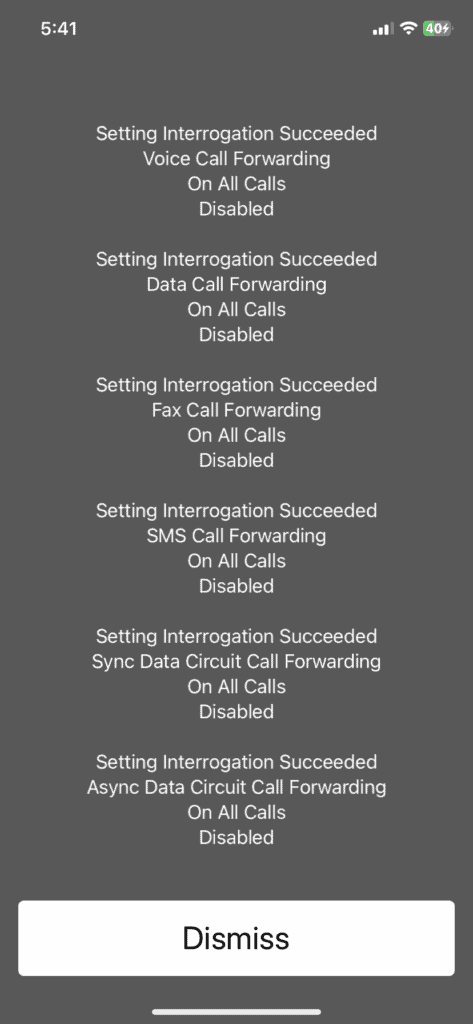When using a smartphone, there are specific codes known as feature access codes that enable users to interact with network services more efficiently. The code *#21# is one such feature access code and when entered into the phone’s dialer, it provides information about call forwarding settings. It is part of a broader category of codes that grant access to a variety of administrative functions on mobile devices. Code *#21# is particularly famous because of a viral meme / internet hoax behind it.
Code *#21# Meaning
| Code | Meaning |
|---|---|
| *#21# | Checks your call forwarding settings. |
| Enabled | Call forwarding is turned on for a specific call type and shows the number it diverts to. |
| Disabled | Call forwarding is turned off for a specific call type. |
Feature access codes such as *#21# play a crucial role in the realm of telecommunications. They allow users to gain insight into the status of certain settings on their smartphones promptly. For instance, entering *#21# on both iPhones and Android devices reveals whether call forwarding is activated or not. These codes are not only important for personal use but are also used by service professionals to troubleshoot and configure mobile devices.
Key Takeaways
- Feature access codes, like *#21#, give users fast information about phone settings.
- Using *#21# checks the call forwarding status on a smartphone.
- These codes are valuable tools for both users and service professionals managing device settings.

What is *#21#?
The Purpose Behind It
*#21# is a specific Unstructured Supplementary Service Data (USSD) code that, when entered, allows you to check if call forwarding is enabled on your mobile device. Think of it as a flashlight, letting you peek into a specific setting on your phone.
The Viral Internet Hoax
Every few years the hoax surrounding code: *#21# goes viral. It goes something along the lines of – you type in the code into your iPhone or Samsung (Android) phone and if it outputs values your phone has been tapped or hacked, etc.
This is simply a meme. As explained above that code is to output your call forwarding status. It isn’t tied to any malicious hacking or malware/spyware on your phone.
How to Use It
Using *#21# is as simple as dialing a phone number. Here’s how:
- Open your phone’s dialer.
- Type in *#21#.
- Press the call or dial button.
- You’ll see a prompt displaying the status of your call forwarding settings.
Understanding *#21# and Its Functionality
The *#21# code is specific to managing call forwarding settings on mobile devices. This functionality is part of a group known as interrogation codes. When entered, these codes provide users with immediate access to certain information and settings related to their phones and service.
The Use and Effect of *#21# on Different Devices
On both iPhone and Android, inputting the USSD code *#21# in the dialer app and pressing the call button grants access to the device’s call forwarding status. This works across various manufacturers, from Apple to Samsung. The output typically displays whether call forwarding is activated for voice, data, fax, SMS, sync, async, packet access, and pad access call forwarding scenarios.
For iPhones, specifically, the code will reveal settings accessible through the Settings app. If an Android user invokes this code, they can expect a similar result, reflecting the phone settings managed by the operating system.
Comparison with Other Interrogation Codes
Interrogation codes like *#21# serve as shortcuts to services normally found embedded deep within phone settings. Other codes, such as ##002# and ##21#, are used to erase call forwarding settings or to reset them to default. These codes complement *#21# by offering additional control over call forwarding features without the need to navigate through menus in the settings app.
Security Implications of *#21#
There are myths surrounding *#21# that claim it can reveal if a phone has been compromised by wiretapping, spyware, or if it’s being monitored by entities like the CIA or law enforcement. These claims lack credibility. Dialing *#21# displays only the call forwarding status and holds no connection to spying tools or possible compromised security. The security of a device generally depends on the presence of updated software, secure passwords, and vigilance against suspicious activities, not USSD codes like *#21#. While users can verify their call forwarding settings, they should look elsewhere for comprehensive security checks on their devices.
Societal Impact of Feature Access Codes
Feature access codes, like *#21#, play a role in the functionality of mobile devices and affect how people interact with technology on a daily basis.
Role in Modern Communication and Services
Feature access codes offer shortcuts for users to access a range of services provided by their carriers, such as AT&T, Verizon, and T-Mobile. These codes, often known as USSD (Unstructured Supplementary Service Data) codes, serve as direct commands. They allow customers to manage call forwarding, check SMS and voice message settings, and view signal information. This adds a layer of convenience and control for users over their mobile services. The use of these codes is often safe and sanctioned by service providers to streamline various operations without the need to navigate through multiple menus.
Misinformation and Myths Around Feature Access Codes
Despite their usefulness, feature access codes have been subject to misinformation and myths, particularly on social media platforms like TikTok and Instagram. A prominent hoax is the belief that dialing codes such as *#21# can reveal if a phone is tapped by entities like the FBI. This claim lacks validity and can lead to confusion or unwarranted concern among users. Service providers and technology experts work to dispel these rumors and educate people on the true nature and function of these codes. Understanding what these codes do and do not do is key to using them effectively and avoiding being misled by social media memes or hoaxes.
Frequently Asked Questions
This section provides clear answers to common questions about specific dial codes for mobile phones, offering practical guidance to users.
What does dialing *#21# on my phone do?
Dialing *#21# on a mobile phone displays the call forwarding status. This is a quick way to check if calls, messages, or data are being redirected elsewhere.
How can I deactivate call forwarding on my device?
To deactivate call forwarding, go to the phone’s call settings and look for call forwarding options. Most devices allow cancellation of all types of redirection by disabling each setting individually.
Can dialing *#21# indicate if my phone is being tracked?
Dialing *#21# does not indicate phone tracking but shows call forwarding status which can be used to redirect calls without the owner’s consent.
Is using the code *#21# considered safe for smartphones?
Using *#21# is a standard network feature and is safe for smartphones. It simply queries the network for call forwarding settings.
What function does ##002# perform on mobile phones?
Entering ##002# on a mobile phone resets all call forwarding settings. This code stops all redirections if the user activated them previously.
How can I determine if my calls are being redirected without my consent?
To check for unauthorized call redirection, regularly dial *#21# to view the current call forwarding status. Unexpected results could indicate undesired call rerouting.







